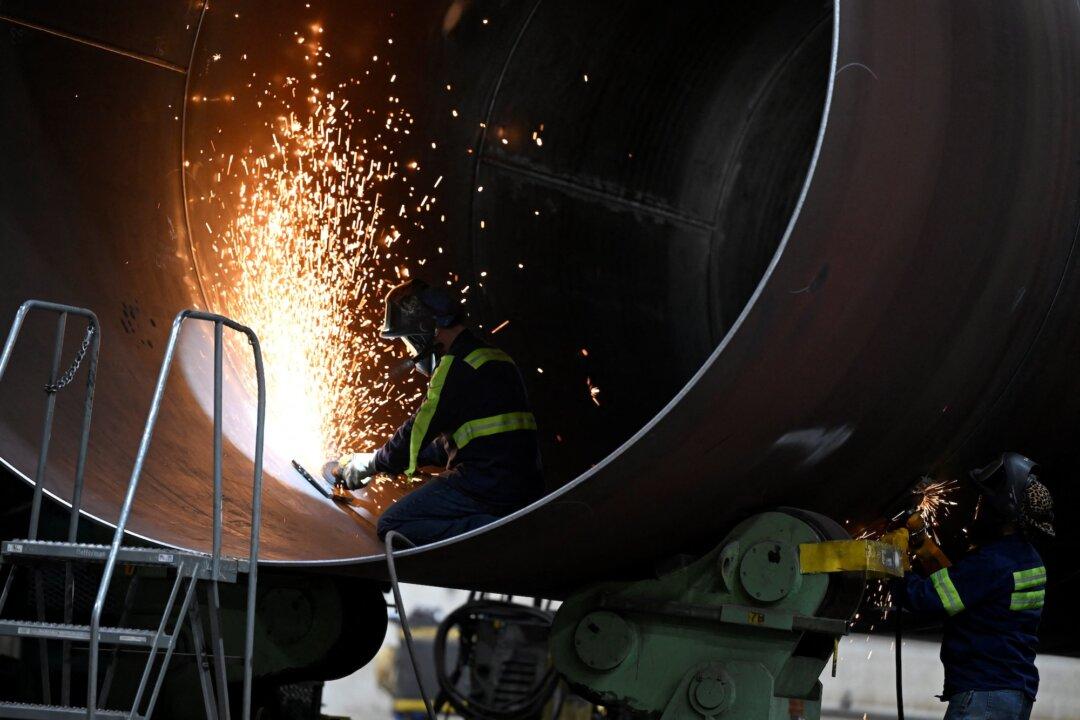The U.S. manufacturing industry was stuck in contraction for the fourth consecutive month in October as the goods-producing sector signaled “a deterioration in business conditions,” a new S&P Global report has found.
The S&P Global Flash U.S. Manufacturing Purchasing Managers Index (PMI)—an indicator of the manufacturing or service sectors’ prevailing direction of economic trends—rose to 47.8 this month, up from 47.3 in September. Anything below 50 confirms that the industry is in contraction.





